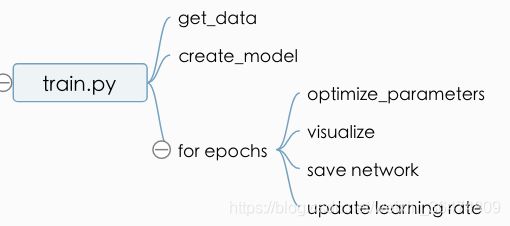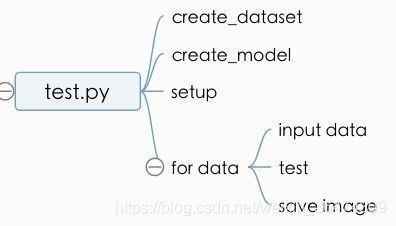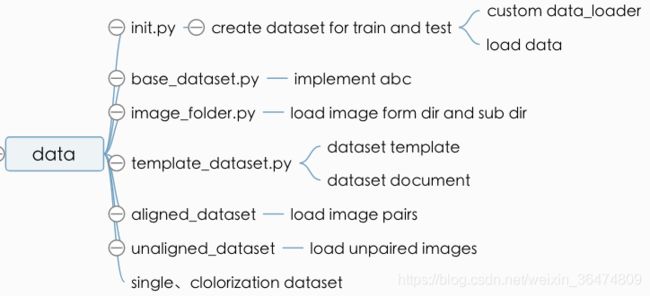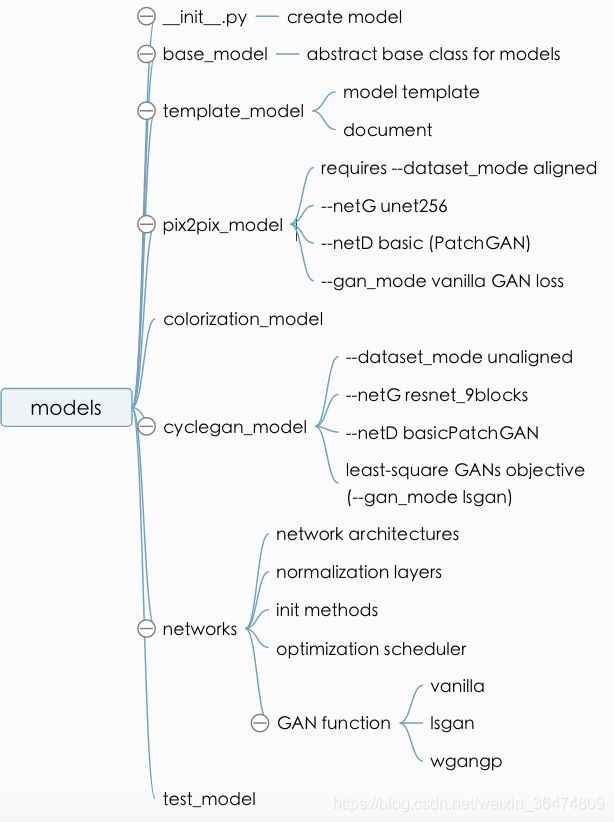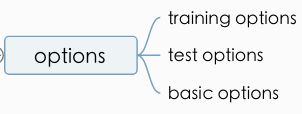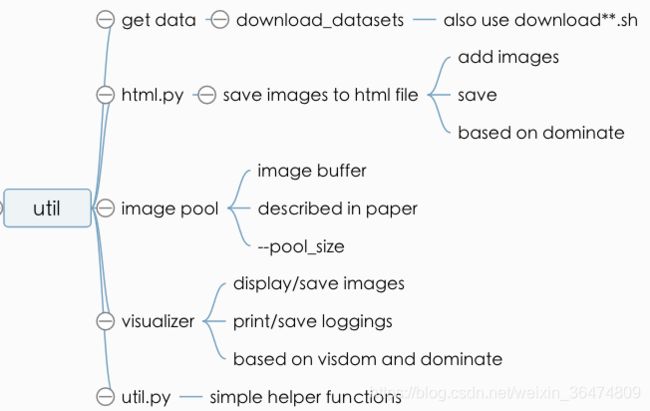CycleGAN(三)代码概览
目的:大致看懂cycleGAN代码结构
参考:https://github.com/junyanz/pytorch-CycleGAN-and-pix2pix/blob/master/docs/overview.md
目录
一、概览
train.py
test.py
data文件夹
models文件夹
options文件夹
util文件夹
二、train.py
三、test.py
四、data文件夹
4.1 __init__.py
4.2 base_dataset.py
4.3 image_folder.py
4.4 template_dataset.py
4.5 aligned_dataset.py
4.6 unaligned_dataset.py
4.7 single、clolorization dataset
五、models
六、options and util
一、概览
train.py
用于模型训练
--model: e.g., pix2pix, cyclegan, colorization) and
different datasets (with option --dataset_mode: e.g., aligned, unaligned, single, colorization
test.py
用于模型测试
data文件夹
包含关于所有数据加载数据处理的程序。
models文件夹
模型相关的objective functions, optimizations, and network architectures.
options文件夹
训练,测试以及相关模型的选项
util文件夹
相关帮助函数的杂项汇总
二、train.py
train获取数据(data文件夹),创建模型(model),循环epoch然后在epoch内更新参数,存储网络
三、test.py
读取数据,创建模型,然后将数据送入模型进行test
四、data文件夹
包含着模型加载与处理的程序。
4.1 __init__.py
用于给train和test过程生成数据集
from data import create_dataset
dataset = create_dataset(opt) to create a dataset given the option opt.4.2 base_dataset.py
https://docs.python.org/3/library/abc.html
- base_dataset.py implements an abstract base class (ABC) for datasets. It also includes common transformation functions (e.g.,
get_transform,__scale_width), which can be later used in subclasses.
用于运用abstract base class abc。
4.3 image_folder.py
pytorch默认只从文件夹中读文件,作者可以从文件夹和子文件夹中读文件。
4.4 template_dataset.py
创建一个数据集的模板,以及详细的描述
4.5 aligned_dataset.py
用于加载样本对(主要用于pix2pix,对于我们的cycleGAN并无太大作用)
4.6 unaligned_dataset.py
用于unpaired 数据集,用于cycleGAN,训练时trainA 和trainB 中应该放入domainA和domainB中的东西,test时也是这样。
4.7 single、clolorization dataset
- image_folder.py implements an image folder class. We modify the official PyTorch image folder code so that this class can load images from both the current directory and its subdirectories.
- template_dataset.py provides a dataset template with detailed documentation. Check out this file if you plan to implement your own dataset.
- aligned_dataset.py includes a dataset class that can load image pairs. It assumes a single image directory
/path/to/data/train, which contains image pairs in the form of {A,B}. See here on how to prepare aligned datasets. During test time, you need to prepare a directory/path/to/data/testas test data. - unaligned_dataset.py includes a dataset class that can load unaligned/unpaired datasets. It assumes that two directories to host training images from domain A
/path/to/data/trainAand from domain B/path/to/data/trainBrespectively. Then you can train the model with the dataset flag--dataroot /path/to/data. Similarly, you need to prepare two directories/path/to/data/testAand/path/to/data/testBduring test time. - single_dataset.py includes a dataset class that can load a set of single images specified by the path
--dataroot /path/to/data. It can be used for generating CycleGAN results only for one side with the model option-model test. - colorization_dataset.py implements a dataset class that can load a set of nature images in RGB, and convert RGB format into (L, ab) pairs in Lab color space. It is required by pix2pix-based colorization model (
--model colorization).
五、models
modules related to objective functions, optimizations, and network architectures.
更改models的顺序:
To add a custom model class called 'dummy', you need to add a file called 'dummy_model.py' and define a subclass DummyModel inherited from BaseModel.
You need to implement the following five functions:
-- <__init__>: initialize the class; first call BaseModel.__init__(self, opt).
--
--
--
--
In the function <__init__>, you need to define four lists:
-- self.loss_names (str list): specify the training losses that you want to plot and save.
-- self.model_names (str list): define networks used in our training.
-- self.visual_names (str list): specify the images that you want to display and save.
-- self.optimizers (optimizer list): define and initialize optimizers. You can define one optimizer for each network. If two networks are updated at the same time, you can use itertools.chain to group them. See cycle_gan_model.py for an usage.
